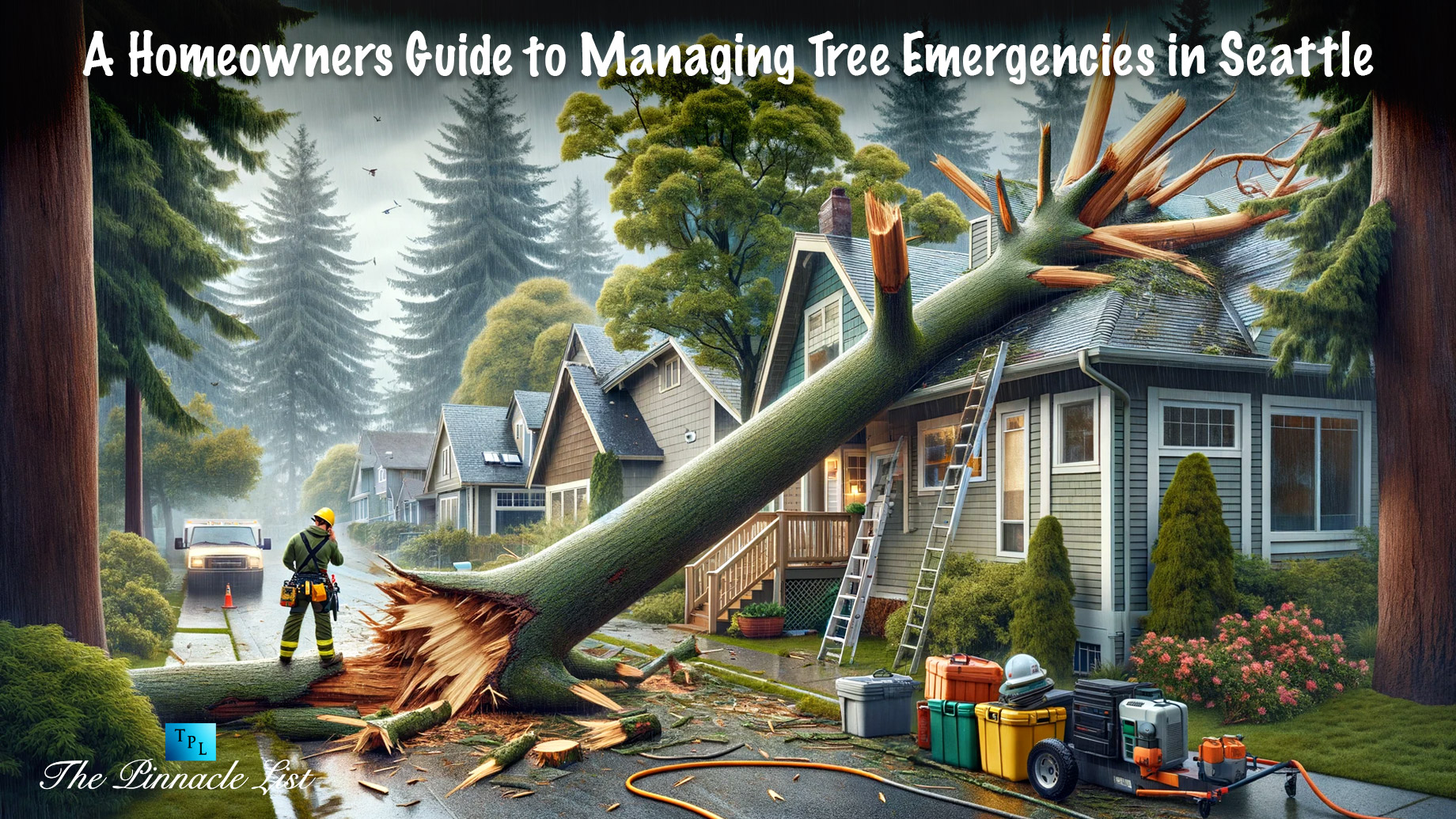
In Seattle, homeowners deal with unique challenges due to the city’s dense urban forests and frequent weather issues like heavy rain and strong winds. These conditions can cause tree emergencies, such as fallen branches or entire trees, that threaten safety and property. Knowing how to handle these situations is a must for keeping safe and reducing damage, making emergency tree services an important topic for residents and service providers.
This article will explain how to deal with tree emergencies. We’ll look at the key steps homeowners should take right after a storm, including assessing damage and seeking help from professional tree service Seattle. We’ll also cover Seattle’s tree management regulations, so homeowners understand the legal requirements and permits involved. What’s more, we’ll discuss essential safety precautions and the necessary aftercare to ensure long-term tree health after recovery.
Assessing the Situation
To handle an emergency tree situation, homeowners should first survey the scene to understand the problems. This means looking for obvious issues like fallen trees or broken branches, and any disruptions to power lines or property. They also need to identify potential dangers that could threaten immediate safety, such as unstable tree limbs or roots.
For example, a tree leaning dangerously over a house, blocking a road, or entangled in power lines is a clear risk that needs quick action. Understanding the damage and its impact helps decide whether to call a professional right away or take initial steps to reduce further risks, like moving vehicles or cordoning off affected areas.
Contacting a Professional Arborist
Hiring a professional arborist is a smart choice after evaluating the damage from a tree-related emergency. Arborists have the specialized knowledge and tools to handle these situations safely and effectively. They are trained to understand tree health, structural integrity, and the best methods for tree removal or trimming. Arborists can manage tree roots, protect surrounding plants, and safely use heavy machinery.
Additionally, a certified arborist knows local regulations and can help homeowners secure any necessary permits. This ensures all actions comply with Seattle’s legal standards and avoid unintentional violations. By using an arborist’s expertise, homeowners can reduce further risks to their property and nearby areas while preserving the health of the local urban forest. Arborists also provide valuable advice on tree care and maintenance, promoting long-term tree health and safety.
Understanding Permit Requirements
The process of removing or trimming trees in Seattle is often more complicated than it seems because it usually requires a permit from the city. Before starting any work, it’s vital to understand these rules to avoid legal issues. The city of Seattle has these regulations to ensure tree removal or trimming doesn’t harm the environment or urban scenery.
Homeowners need to check if they need a permit, as not having one can result in fines and delays. Although this might seem inconvenient, it helps maintain the urban tree canopy, which is important for air quality, aesthetic value, and habitat conservation. The permitting process also helps the city monitor changes in tree coverage, supporting urban planning and environmental sustainability goals.
Safety Precautions
Ensuring safety during emergency tree services is key. Homeowners should be very careful around fallen trees, especially if power lines are involved. To stay safe, avoid touching downed lines and immediately notify utility companies or emergency services. Wearing safety gear like helmets, gloves, and eye protection can help prevent injuries.
Arborists, who are specially trained, often give specific safety instructions for their work. Following these guidelines is a must to protect everyone and create a safe environment for the professionals dealing with the tree emergency. Additionally, clearing the area of children and pets can further reduce risks. Combining personal caution with professional advice is key to effective safety management in these situations.
Aftercare and Maintenance
After emergency tree services, it’s important to continue caring for and maintaining your trees to keep them healthy and safe. This includes regular pruning to remove dead or weak branches and improve the tree’s shape, watering during dry periods to help growth, and checking for signs of disease or pests that could harm the tree if ignored.
Consistent care not only prevents future emergencies by making the trees stronger but also improves the beauty and environmental benefits they provide to your property. It’s also helpful to occasionally consult with a professional arborist for expert advice and early detection of potential problems. By following these aftercare steps, homeowners greatly contribute to the health of their landscape and the community’s urban forest.
Managing tree emergencies in Seattle’s unique urban environment involves a proactive approach to safety and tree care. Homeowners must first assess any immediate dangers and then engage professional arborists to handle the situation safely and effectively. Understanding and complying with local permit requirements ensures that all actions are legal and environmentally responsible. Maintaining safety precautions during the emergency and following up with proper aftercare and regular maintenance enhance tree health and prevent future hazards. By taking these steps, Seattle residents can protect their properties and contribute to the city’s beautiful and sustainable urban forest.